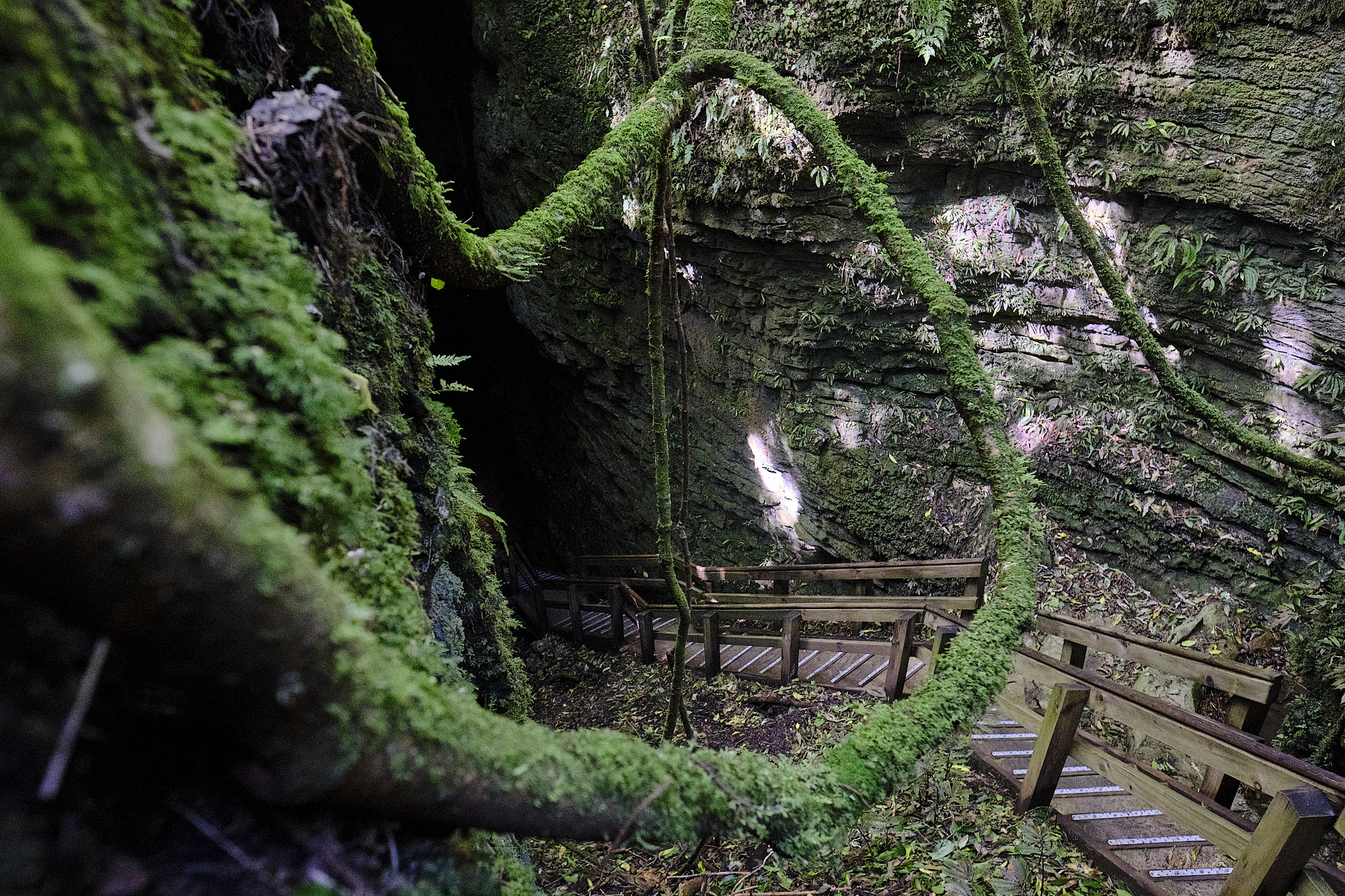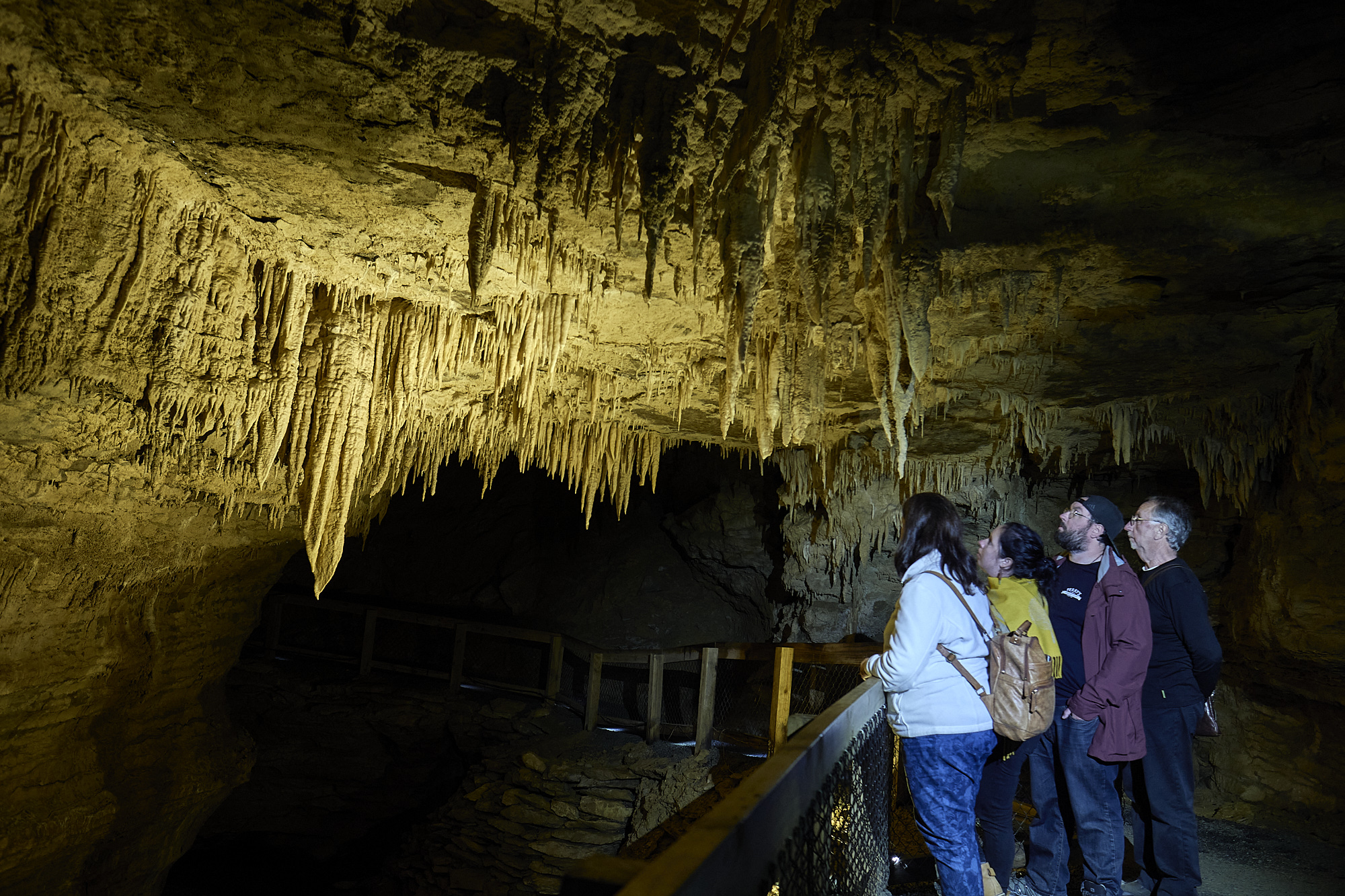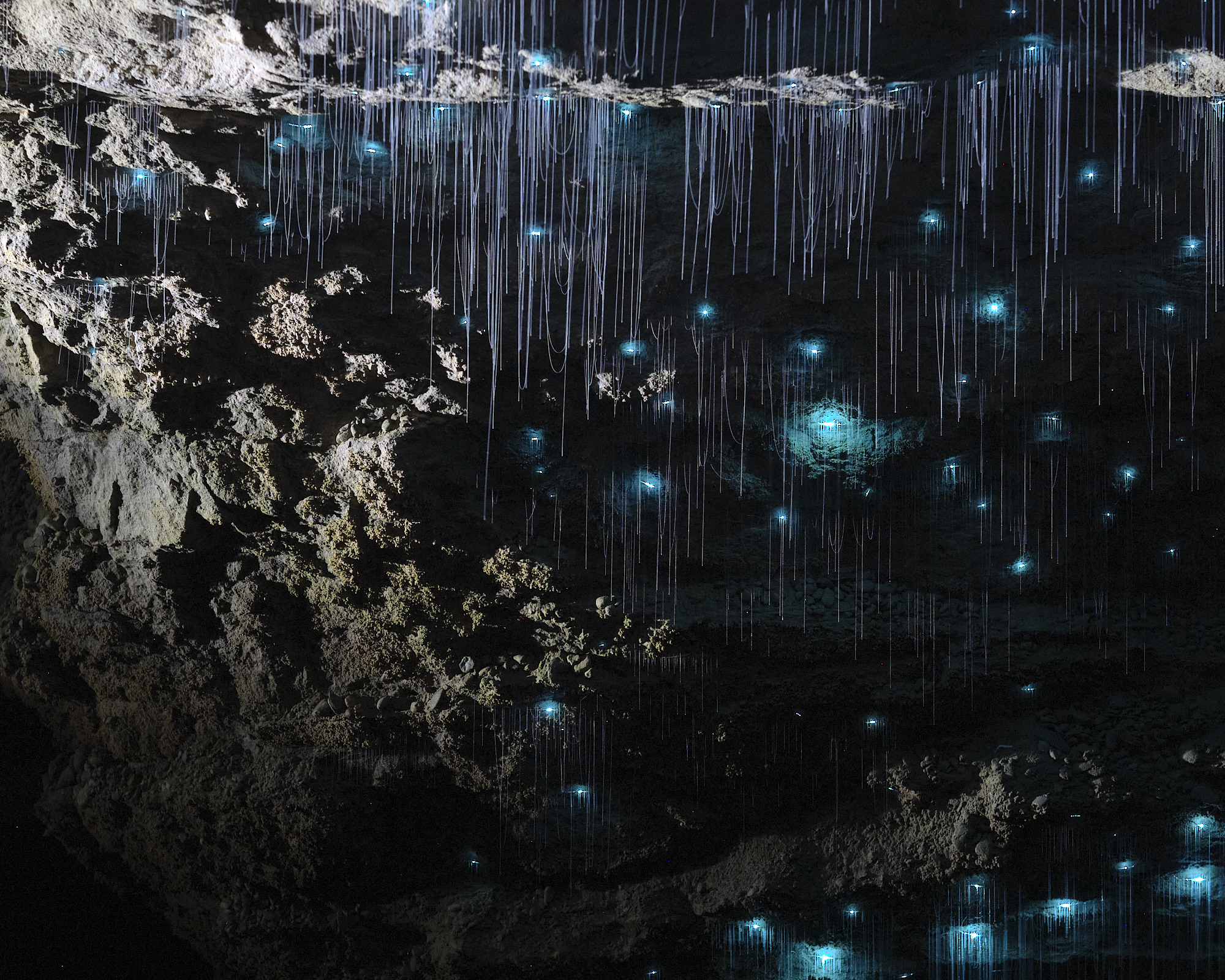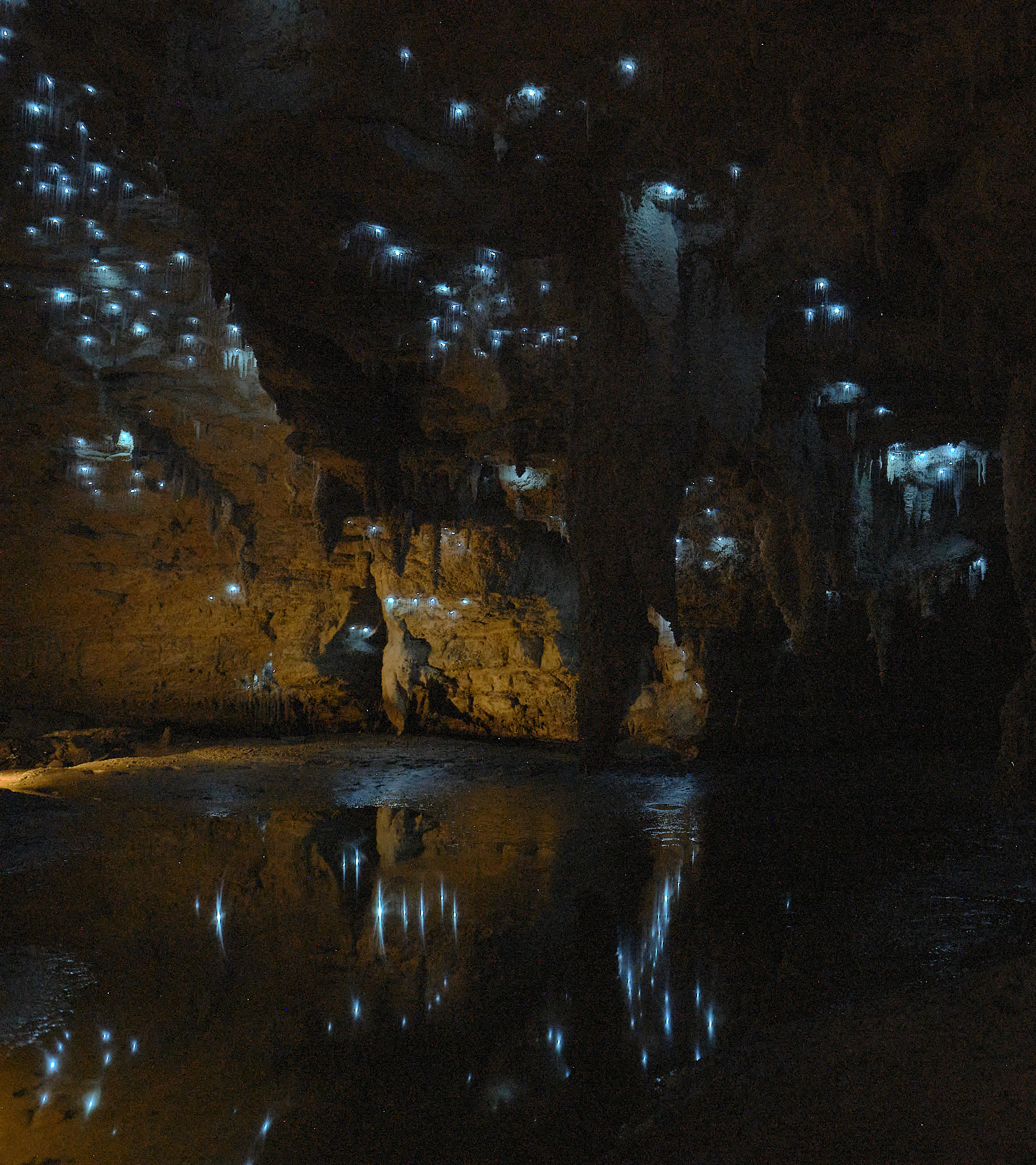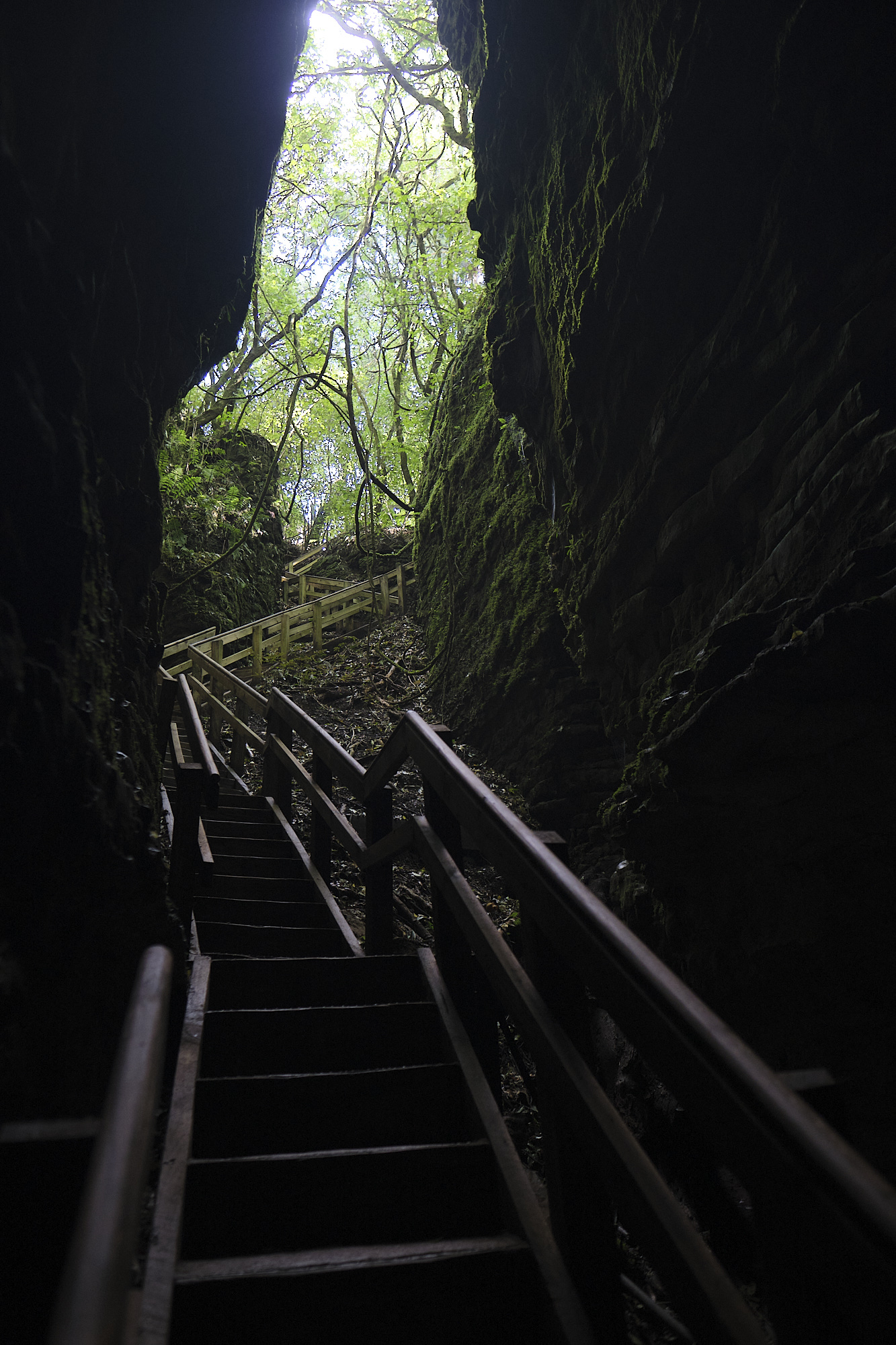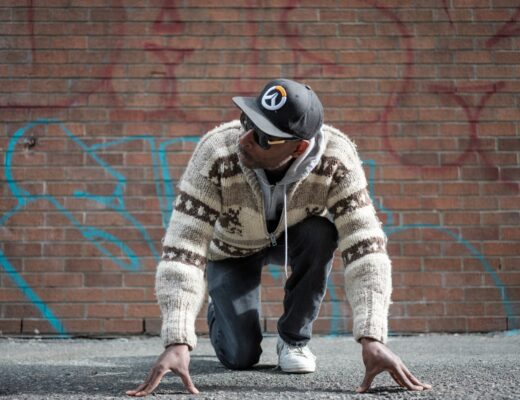In its most base essence photography is the manipulation of light onto film or now a digital sensor. But what happens when you are in a situation where there is so little light that to a human eye it would be deemed pitch black? I recently found myself in such a situation deep under the hills of Waitomo, New Zealand where I was fortunate enough to have the opportunity to take photos of the Arachnocampa luminosa, better known as the New Zealand glow-worm. Exploring the Footwhistle cave system with local photographer Kyle Barnes was a real treat and taught me a huge amount about extreme low light image making, mistakes and using the tools we have in modern cameras to capture the images we visualise.
Waitomo Central itself is a beautiful village set amongst pockets of native New Zealand forest and built on top of a system of limestone caves. Wai translates as ‘water’ from the indigenous language of Aotearoa New Zealand Te Reo Māori and tomo as entrance or ‘to go in’. The name of the village speaks to both water flowing through the cave systems but also succinctly explains the food source of the numerous resident glow-worms who rely on the larvae of breeding insects washing into the cave system from the rivers to hatch and be enraptured and ensnared by their bioluminescence and sticky silk threads.
Kyle and I descended the staircase into the cave system and I was struck by how dark and absolutely still it was. Inky black and silent save for the slow sloosh of water running through the cave; calming and beautiful. For this trip I had packed my X-T3, 3-Legged Thing travel tripod, an XF16mm F1.4 and the XF56mm F1.2. Of course, I would need a tripod and I wanted to get as many wide and dramatic shots as possible with the 16mm, but I was also hoping to get tight into some detail with the 56mm despite its relatively long minimum focus distance of 70cms. I was incredibly lucky to have Kyle with me who knew the cave system like the back of his hand. We planned 4 or 5 different locations for shots including at least one with people for context.
The shooting process itself was lengthy. A test shot or two in each location followed by the real thing. Each exposure lasting between two to eight minutes at ISO 1600 to 3200 and with a flick of light from Kyle’s torch to highlight the silk threads of the glow-worms or rock formations in the cave system. It was an inexact science and sometimes the light from the torch was too bright and blew out the image but others just not quite enough to give the depth of detail needed. There were a few lights that could be switched on and off in the cave, but when shooting these were generally switched off and so we were in pitch black. Kyle was brilliantly persistent and was as invested in getting good shots as I was! We moved through the cave and tried new ideas and lens combinations to get a variety of shots. Including people for context and tight and wide shots as we had planned. To give you some idea, each glow worm produces around one nanowatt of light meaning you would need millions clumped together to get even close to a 40-watt bulb. It was difficult conditions for photography.
This is then where I came unstuck; I ignored one of the fundamentals of good photographic practice – always check your histogram. In a time pressure placed on myself by me alone (Kyle was happy to be in the cave), I rushed and was tricked by the relative brightness of my camera rear lcd screen into thinking the images I had taken were far better exposed than they were. The cave was so dark that my vision was skewed, and this made the images appear well balanced on the rear lcd, a cursory look at the histogram would have shown me that I was not even close to what was needed for a good exposure in these conditions.
The images presented here are generally very over worked in post but I hope still convey some of the beauty of the cave system. They won’t win, or be close to being entered, any awards but they will forever serve me as a memory of the time I spent in the caves with a truly beautiful and spectacular taonga (treasure) creature.
So what is his article about? There are so many fantastic images posted on this site and I had fully expected and hoped to be contributing some glow-worm shots to this collection but for a technical and concentration fault of my own. I suppose then that the article is about two things. The first is to encourage you to take risks and shoot in the extremes. I am unlikely to shoot in conditions as dark as these again. The night sky is, by some margin, much brighter than some corners of the cave and so I won’t have the experience of true darkness in my photographs unless I go back. Only through pushing boundaries and trying things will you reinforce the important fundamentals of image making; I won’t be making the same mistake with the histogram. Secondly, just make images and imperfection doesn’t matter because pictures are nothing if not memories captured. The images aren’t perfect and are presented here in that spirit, but the memories I will have of the experience are great and sometimes that is more than enough.


